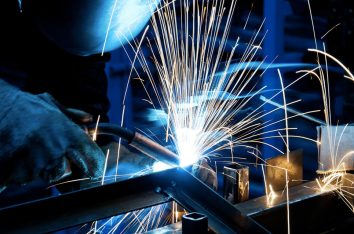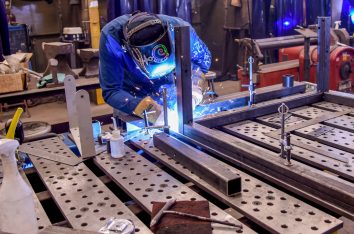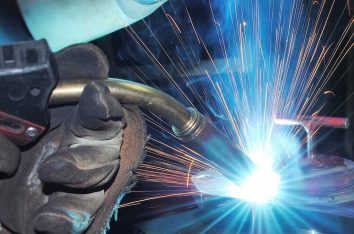In the ever-evolving world of fabrication, staying ahead of the competition and growing your business requires a multi-faceted approach. From expanding services and entering new markets to improving shop efficiency and embracing sustainable practices, there are numerous strategies that can help you achieve your business goals. This article explores various fabrication projects that can significantly boost your business, providing actionable insights and practical tips to help you succeed.
Key Takeaways
- Identify market needs and invest in new equipment to expand your fabrication services.
- Conduct thorough market research and build strong partnerships to enter new markets.
- Implement vertical integration to streamline operations and increase profitability.
- Adopt lean manufacturing principles and automation to improve shop efficiency.
- Focus on quality control and sustainable practices to enhance your brand reputation.
Expanding Your Fabrication Services
Expanding your fabrication services is a strategic move that can significantly boost your business. By identifying market needs, investing in new equipment, and training your workforce, you can position your company for sustained growth and success. Diversifying your product and service portfolio can attract a wider range of customers and open up new revenue streams. Below are some key areas to focus on when expanding your fabrication services.
Entering New Markets
Entering new markets requires strategic planning and execution. Fabricators must identify untapped markets, assess competition, and develop targeted marketing strategies. By expanding into new markets, fabricators can increase revenue, diversify their customer base, and stay competitive in a rapidly evolving industry.
Market Research Strategies
Market research is a crucial component of a marketing strategy. To effectively enter new markets, businesses must first understand the needs and preferences of potential customers. This involves gathering data on market trends, customer behavior, and competitor activities. By unlocking these insights, manufacturers can tailor their products and services to meet the demands of the new market.
Building a Marketing Plan
A well-structured marketing plan is essential for successfully entering new markets. This plan should outline the target audience, marketing channels, and promotional strategies. Consider expanding into new channels such as social media, email marketing, and content marketing to reach a broader audience. Additionally, participating in trade shows and industry events can help create awareness and generate interest in your business.
Networking and Partnerships
Networking and forming partnerships are vital for entering new markets. By collaborating with other businesses, suppliers, and industry professionals, you can gain valuable insights and access to new opportunities. Consider attending conferences, trade shows, and other industry events to build relationships and expand your network. These connections can provide support and resources that are crucial for successful market entry.
Vertical Integration in Fabrication
Vertical integration in fabrication involves controlling multiple stages of production, from raw materials to finished products. This approach enables fabricators to optimize processes, reduce costs, and improve quality. By integrating vertically, fabricators can increase efficiency, reduce dependencies on suppliers, and enhance their competitive advantage.
Benefits of Vertical Integration
Successful fabrication shops embrace vertical integration as a core business practice and a key predictor of success. They have learned to become masters of production technologies. This means that future construction manufacturing companies will offer modularization, racking, pod creation, and continually improving approaches to integrating people, processes, and materials. Bringing cost-effective and on-time delivery of high-quality products is a significant advantage of vertical integration.
Steps to Implement Vertical Integration
- Assess Current Capabilities: Evaluate your existing production technologies and processes to identify areas for improvement.
- Invest in Technology: Adopt advanced technologies such as MIG welding, CAD/CAM software, and automation tools to enhance production efficiency.
- Train Your Workforce: Ensure that your employees are skilled in the latest fabrication techniques and technologies.
- Streamline Processes: Integrate various stages of production, from material sourcing to final assembly, to reduce lead times and costs.
- Monitor and Improve: Continuously assess the performance of your integrated processes and make necessary adjustments to optimize efficiency.
Case Studies of Successful Integration
For many construction companies, their customers prefer the economies of scale and scope convenience for their construction logistics needs. They partner with firms that can provide the full scope of services under one roof. This can involve DfMA, material sourcing, fabricating, paint, logistics management and delivery, installation, controls, testing and balancing, and commissioning. Complete vertical integration of MEP (Mechanical, Electrical, and Plumbing) is very rare to find but offers significant benefits. Modularization is a growing trend in construction and is hyper-focused on vertical integration of construction areas such as bathroom pods and multi-family housing.
Improving Fabrication Shop Efficiency
Fabrication shops can significantly enhance their operations by embracing and implementing best practices across various aspects of their business. By focusing on equipment maintenance, maintaining a skilled workforce, implementing safety measures, optimizing workflow, managing materials efficiently, conducting cost analysis, and embracing technology, these shops can achieve higher productivity, improved quality, and long-term success.
Developing Custom Fabrication Products
Creating custom fabrication solutions for your industrial needs can significantly boost your business by catering to specific client requirements. This involves a detailed understanding of the market, prototyping, and effective marketing strategies. Custom fabrication refers to the process of creating unique and specific structures or components tailored to the exact specifications of a project or client.
Enhancing Quality Control
Quality control is a critical aspect of any fabrication business, ensuring that products meet customer expectations and stand the test of time. Implementing robust quality assurance processes, investing in employee training programs, and establishing effective customer feedback mechanisms are essential steps to enhance quality control.
Quality Assurance Processes
A detailed guide to quality control in manufacturing should include strategies for enhancing quality control in manufacturing. Adopting best practices becomes crucial in enabling fabricators to enhance their competitiveness. By implementing efficient production processes and embracing technological advancements, fabricators can optimize their operations and deliver superior products.
Employee Training Programs
Motivated employees can contribute to higher-quality products, increased customer satisfaction, and overall business growth. Continuous improvement efforts involve as much organizational change as technical implementation. Training programs should focus on both technical skills and fostering a culture of quality across the organization.
Customer Feedback Mechanisms
Establishing effective customer feedback mechanisms is vital for continuous improvement. By actively seeking and analyzing customer feedback, businesses can identify areas for improvement and ensure that their products meet customer expectations. This proactive approach helps in maintaining high standards of quality and customer satisfaction.
Sustainable Fabrication Practices
Sustainable fabrication practices are essential for modern fabrication shops aiming to reduce their environmental impact and improve efficiency. By adopting eco-friendly materials, energy-efficient processes, and waste reduction techniques, businesses can not only contribute to environmental conservation but also achieve cost savings and operational efficiency.
Eco-friendly Materials
Using eco-friendly materials is a fundamental step towards sustainability in fabrication. These materials often have a lower environmental footprint and can be recycled or repurposed, reducing waste. Successful fabrication shops embrace vertical integration to streamline the use of such materials, ensuring that every step of the production process is optimized for sustainability.
Energy-efficient Processes
Metal fabrication processes such as welding, cutting, and forming are inherently energy-intensive, requiring significant amounts of electricity and heat. Implementing energy-efficient processes can significantly reduce energy consumption and costs. This includes investing in modern, energy-efficient equipment and adopting best practices for energy management.
Waste Reduction Techniques
Waste reduction is a critical component of sustainable fabrication. By optimizing material usage and recycling scrap materials, fabrication shops can minimize waste. Additionally, adopting lean manufacturing principles can help in identifying and eliminating waste throughout the production process, leading to more efficient and sustainable operations.
Building a Strong Brand Identity
Building a strong brand identity is essential for any fabrication business looking to stand out in a competitive market. A well-defined brand identity can help you attract and retain customers, differentiate your services, and build trust with your audience.
Financial Management for Fabrication Shops
Effective financial management is crucial for the success and sustainability of any fabrication shop. By implementing robust budgeting and forecasting practices, shops can ensure they are well-prepared for future financial challenges and opportunities. Accurate budgeting helps in allocating resources efficiently and avoiding unnecessary expenditures.
Cost reduction strategies are essential for maintaining profitability. Fabrication shops can achieve higher efficiency and profitability by adopting better cost analysis practices. This involves thoroughly examining expenses to identify areas where costs can be reduced without compromising quality. Implementing material management practices, such as proper storage methods and inventory control, can significantly minimize waste and reduce costs.
Investing in growth is another critical aspect of financial management. By allocating funds towards new equipment, technology, and workforce training, fabrication shops can enhance their capabilities and stay competitive in the market. Utilizing financial management software, like BuildTools' financial management features, can help track orders, control budgets, and create financial statements in one system, ensuring a streamlined and efficient financial management process.
Leveraging Technology in Fabrication
Leveraging technology in fabrication is crucial for staying ahead in the industry. Advanced technologies like automation, robotics, and data analytics can improve efficiency, accuracy, and productivity. By embracing technology, fabricators can reduce costs, enhance product quality, and stay competitive in a rapidly evolving market.
Adopting CAD/CAM Software
Computer-Aided Design (CAD) and Computer-Aided Manufacturing (CAM) software are essential tools for modern fabrication shops. By leveraging these technologies, fabricators can achieve higher precision and efficiency in their projects. CAD/CAM software allows for the creation of detailed 3D models, which can be directly translated into manufacturing instructions. This reduces the likelihood of errors and ensures that the final product meets the required specifications. Additionally, CAD/CAM software can streamline the design process, making it easier to modify and optimize designs as needed.
Utilizing IoT in Fabrication
The Internet of Things (IoT) is revolutionizing the fabrication industry by enabling real-time monitoring and control of equipment and processes. IoT devices can be integrated into fabrication machinery to collect data on performance, usage, and maintenance needs. This data can then be analyzed to identify areas for improvement and to predict potential issues before they become critical. By utilizing IoT technology, fabrication shops can increase uptime and reduce downtime, leading to more efficient operations. Moreover, IoT can enhance safety by providing real-time alerts and monitoring of hazardous conditions.
Future Trends in Fabrication Technology
The future of fabrication technology is promising, with several emerging trends set to transform the industry. One such trend is the increasing use of automation and robotics. Automated systems can perform repetitive tasks with high precision and speed, freeing up human workers for more complex and creative tasks. Another trend is the adoption of advanced welding techniques, such as tungsten inert gas welding (TIG), which offers superior control and quality. Additionally, the development of new materials and fabrication methods, such as additive manufacturing, is expanding the possibilities for custom and complex designs. Staying informed about these trends and investing in relevant technologies will be crucial for fabrication shops to remain competitive in the future.
Safety and Compliance in Fabrication
Ensuring safety and compliance in fabrication shops is essential for protecting employees and maintaining operational efficiency. First and foremost, compliance and safety standards protect employees. The most valuable asset to a business is its workforce, and these standards not only safeguard their well-being but also enhance productivity and morale.
Conclusion
By taking all these steps, you will soon have a successful fabrication business. Start off with small projects and work your way up. The better the results, the more your business will grow. Whether you are a small fabrication shop looking to expand, a fabricator aiming to start your own venture, or a successful facility seeking new markets, there is always room for growth in the metal fabrication industry. Focus on key strategies such as expanding your services, conquering new markets, and improving your shop's efficiency to increase the value of your business. With dedication and the right approach, your fabrication business can thrive and reach new heights.
Recent Posts
- Where to Find High-Quality Fabrication and Welding in Oregon
- Where to Find High-Quality CNC Machining in Oregon
- CNC Machining Services by Ram-Z Fab: Precision and Innovation in Willamette Valley
- CNC Machining in the Automation Industry: Precision Engineering for the Future
- CNC Machining in the Food Production Industry: Precision for Palates




